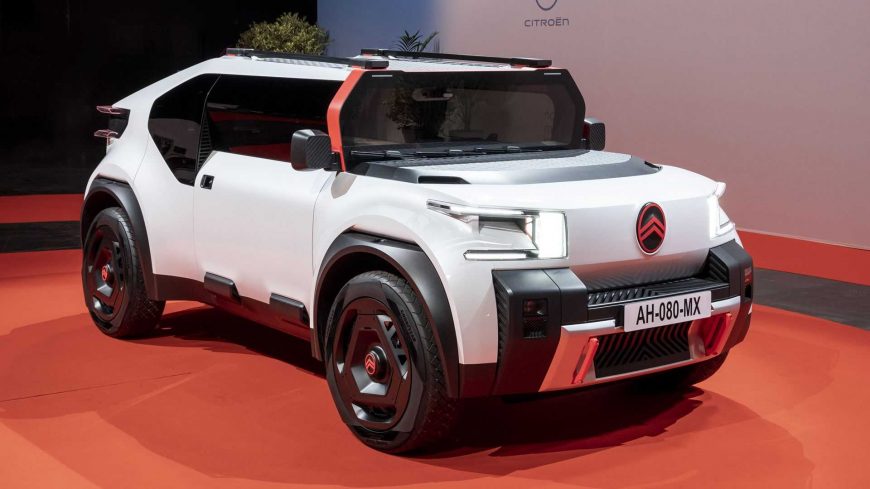The Citroen Oli is the company’s latest take on electric mobility, and it’s just as quirky and odd as the Ami that launched in 2020. The Oli is an urban pickup that’s designed for simplicity, sustainability, and affordability while previewing future Citroen vehicle features.
The French automaker purposefully designed the Oli (pronounced all-e) with exaggerated styling, with form following function. The company went with an upright windshield because it cut down on the amount of glass needed and reduced the occupant’s exposure to the sun. Citroen estimates that the windshield could cut the AC system’s demand on the batteries by up to 17 percent, and it’s just one example of how the company focused on simplicity in the design.
Many of Citroen’s features were designed to reduce complexity while utilizing recycled and recyclable materials. The seats have just 8 parts compared to 37 in a traditional SUV seat, using tubular frames and 3D-printed mesh backrests. That’s an 80-percent reduction. That ethos also affects the rest of the interior, with Oli’s dash and center console utilizing 34 parts compared to a family hatch that uses around 75.
Citroen reduced the weight of the doors, which are designed to maximize storage, by removing the speakers, soundproofing, and electric wiring, saving around 7 kilograms (15 pounds) of weight per door. Removing the traditional sound system and replacing it with removable Bluetooth speakers and a smartphone dock saved 250 kg (551 lbs). The hood, roof, and truck bed sides are made from recycled corrugated cardboard sandwiched between fiberglass panels, weighing just 6 kg (13 lbs) and capable of supporting the weight of an adult.
The company designed the Oli with a target weight of 1,000 kg (2,204 pounds). With its 40-kilowatt-hour battery, the EV has an estimated range of 400 km (249 mi). The battery can charge from 20 to 80 percent in 23 minutes while supporting vehicle-to-grid and vehicle-to-load capabilities. Citroen limits its top speed to 110 kilometers per hour (68 miles per hour), focusing on urban mobility and not high performance. The car even features the company’s new logo.
“Oli is a working platform to explore ingenious ideas that are realistic for future production,” says Laurence Hansen, the company’s head of product development. “They won’t all come together, nor in the physical shape you see here, but the high level of innovation being showcased is inspiring future Citroens.”


Electric vehicles have the opportunity to change how we get around. The Citroen Ami and Oli reveal how these new powertrains can increase the variety of vehicles automakers design and build. The increase in charging stations will also change EVs, with more chargers reducing the need for vehicles with 400 miles of range. Bigger batteries are heavy, require more power to move, and take longer to charge.



